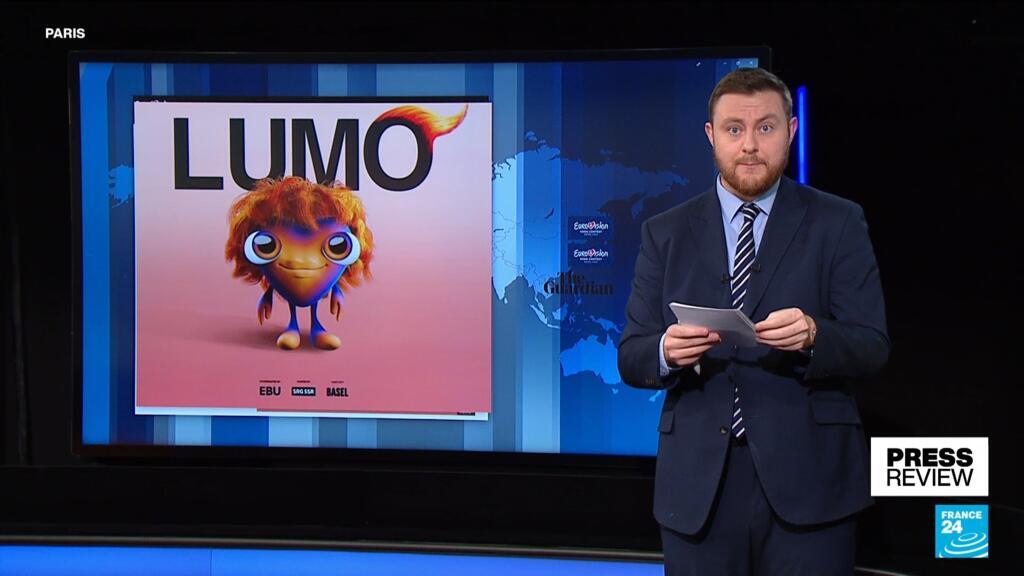The Complexities Of The Chinese Auto Market: A Look At BMW, Porsche And Beyond

Table of Contents
The Unique Landscape of the Chinese Auto Market
The Chinese auto market is unlike any other, presenting a unique set of opportunities and obstacles for international players. Understanding this landscape is critical for success.
Market Size and Growth
China's sheer size and continued growth, although slowing in recent years, make it a highly attractive yet demanding market.
- Largest automotive market globally: Its massive scale dwarfs all other national markets, offering unprecedented potential for revenue generation.
- Significant growth potential in electric vehicles (EVs) and new energy vehicles (NEVs): The Chinese government's strong push towards electric mobility is fueling rapid expansion in this sector. This presents a major opportunity for foreign automakers to establish a strong foothold in the burgeoning NEV market.
- Regional variations in demand and consumer preferences: The market isn't homogenous; differing economic conditions and cultural nuances across various provinces create diverse consumer segments demanding tailored product offerings and marketing strategies.
The sheer scale necessitates sophisticated distribution networks and localized marketing campaigns to effectively reach all consumer segments. Ignoring regional differences can lead to significant market penetration failures.
Government Regulations and Policies
Navigating the regulatory environment is a critical aspect of success in the Chinese auto market. Government policies significantly influence market access and profitability.
- Impact of "Made in China 2025": This ambitious government initiative promotes domestic innovation and technological advancement, creating both opportunities and challenges for foreign companies. Foreign automakers often need to adapt their strategies to align with these goals, frequently through joint ventures and local production.
- NEV subsidies and their effects: Government incentives for purchasing NEVs influence consumer choices and the market share of various manufacturers. These subsidies, while effective in driving EV adoption, also create a dynamic environment where strategies must adapt to changing incentives.
- Challenges of navigating complex bureaucratic processes: The regulatory framework can be intricate and demanding, requiring significant investment in compliance and legal expertise.
Foreign automakers must carefully consider localization efforts, partnerships with local players, and meticulous compliance with evolving regulations to successfully navigate the Chinese automotive landscape.
Consumer Preferences and Buying Habits
Understanding the nuances of Chinese consumer preferences is paramount for success. Their buying habits and brand loyalties differ significantly from other markets.
- Preference for luxury brands: Luxury vehicles hold significant appeal amongst affluent Chinese consumers, representing status and success. This preference fuels the success of brands like BMW and Porsche.
- Rising demand for SUVs and EVs: These vehicle types are increasingly popular, driven by changing lifestyles and government policies. Adapting product portfolios to reflect these trends is critical.
- The importance of brand image and technological advancements: Chinese consumers are highly brand conscious, valuing prestige and technological innovation. Marketing efforts must highlight both aspects.
- Growing influence of online reviews and social media: Digital platforms play a crucial role in shaping consumer perception and purchasing decisions, making effective online engagement vital for success.
Understanding these preferences and leveraging digital channels effectively is essential for creating compelling marketing campaigns that resonate with target audiences.
Case Studies: BMW and Porsche in China
BMW and Porsche exemplify successful navigation of the Chinese market, offering valuable lessons for other international players.
BMW's Strategy
BMW's long-standing presence in China is a testament to their successful adaptation.
- BMW's localized production facilities: Establishing local manufacturing capabilities reduces import costs and streamlines distribution.
- Successful models tailored to the Chinese market: Offering specific models designed to meet local preferences demonstrates commitment to the market.
- Their online sales strategy: Embracing digital channels is essential in a market where online influence is pervasive.
- BMW's partnerships: Collaborations with local businesses facilitate market entry and navigate complex regulatory landscapes.
BMW's approach demonstrates the importance of long-term investment and strategic adaptation to local market demands.
Porsche's Approach
Porsche’s success highlights the power of brand prestige and targeted marketing within the luxury segment.
- Porsche's strong brand recognition: Their established reputation for quality and performance resonates well with the luxury-oriented Chinese consumer.
- The appeal of its sports cars and SUVs in China: Offering a product portfolio that caters to the preference for luxury vehicles is key to success.
- Porsche's dealership network and customer service: Providing exceptional customer service creates brand loyalty and reinforces the premium brand image.
- Digital marketing and social media engagement: Effective online presence strengthens brand visibility and engagement within the target demographic.
Porsche’s strategy underscores the effectiveness of maintaining a strong brand identity while catering to the specific preferences of affluent Chinese consumers.
Beyond BMW and Porsche: Challenges for Other International Automakers
While BMW and Porsche have demonstrated success, other international automakers face significant hurdles in the Chinese market.
Competition from Domestic Brands
The rise of domestic brands poses a significant challenge to established foreign players.
- Technological advancements of Chinese brands: Domestic brands are rapidly innovating and developing competitive products, particularly in the EV sector.
- Competitive pricing strategies: Chinese brands often offer more aggressive pricing, impacting market share for foreign competitors.
- Government support for domestic automakers: Government policies often favor local manufacturers, creating an uneven playing field.
Responding effectively to this competition requires a robust focus on innovation, cost management, and differentiation.
Supply Chain Disruptions and Economic Uncertainty
External factors further complicate the Chinese automotive landscape.
- Impact of chip shortages: Global supply chain disruptions, like the semiconductor shortage, have severely impacted production capacity.
- Fluctuations in raw material prices: Volatile commodity prices increase production costs and affect profitability.
- Effects of global economic instability on consumer spending: Economic uncertainty can reduce consumer confidence and demand, affecting sales volumes.
Navigating these uncertainties requires robust supply chain management, risk mitigation strategies, and agile responses to changing market conditions.
Conclusion
The Chinese auto market presents a complex and dynamic environment for international automakers. While brands like BMW and Porsche have found success through localization, targeted marketing, and adapting to evolving consumer preferences, the rise of domestic brands and global economic uncertainties necessitate constant adaptation and innovation. To thrive in this competitive landscape, foreign companies must prioritize understanding the nuances of the Chinese auto market, investing in technological advancements, building strong local partnerships, and continuously refining their strategies to meet the evolving demands of Chinese consumers. Understanding the complexities of the Chinese automotive market is crucial for long-term success. Learn more by researching market trends and best practices for engaging the Chinese consumer.

Featured Posts
-
 Former Uber Ceo Travis Kalanick Topic Abandonment A Significant Oversight
May 19, 2025
Former Uber Ceo Travis Kalanick Topic Abandonment A Significant Oversight
May 19, 2025 -
 Kibris Ta Politik Gelismeler Ve Direkt Ucuslarin Gelecegi Tatar In Analizi
May 19, 2025
Kibris Ta Politik Gelismeler Ve Direkt Ucuslarin Gelecegi Tatar In Analizi
May 19, 2025 -
 The Eurovision Lumo Debate Worst Mascot In History
May 19, 2025
The Eurovision Lumo Debate Worst Mascot In History
May 19, 2025 -
 47
May 19, 2025
47
May 19, 2025 -
 Paige Bueckers Senior Day A U Conn Huskies Of Honor Moment
May 19, 2025
Paige Bueckers Senior Day A U Conn Huskies Of Honor Moment
May 19, 2025
